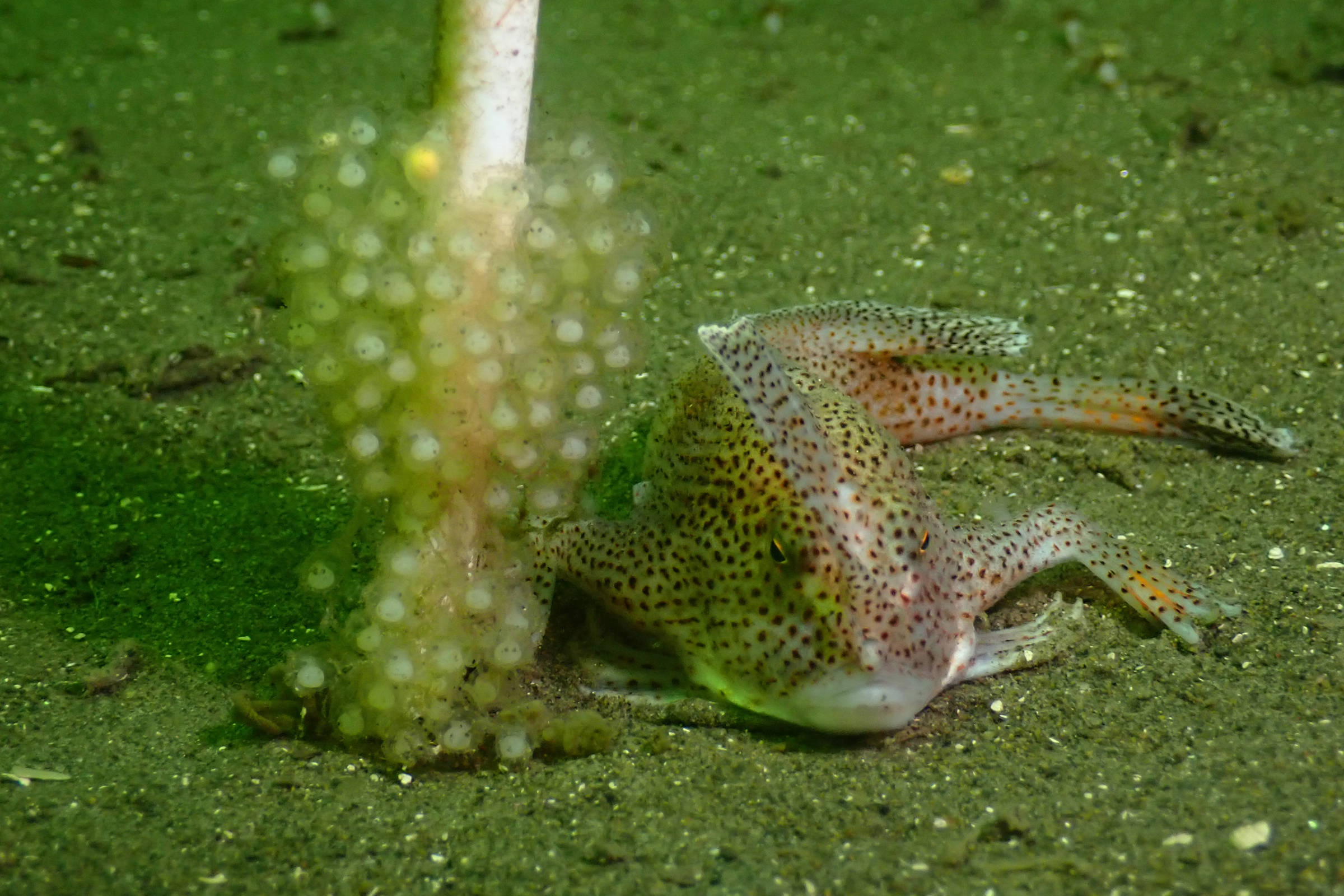Conservation of spotted handfish and their habitats

Female spotted handfish in the Derwent guarding egg clutch on an Artificial Spawning Habitat.
Image: Carlie Devine, CSIRO
Project with CSIRO
The population of spotted handfish in the Derwent has become highly fragmented, with the species occupying small, localised sites within the estuary and the populations dwindling. This project aims to:
- monitor and survey the current spotted handfish population
- assist the breeding process by introducing alternative artificial spawning substrates in areas lacking natural options
- be involved in a spotted handfish captive breeding program supported by industry partners Melbourne SEALIFE Aquarium and Seahorse World Tasmania.
The CSIRO has been undertaking regular surveys of spotted handfish and their habitat; observing and documenting the species in its natural environment, and paying close attention to the presence of their natural spawning substrates. Both SCUBA divers and remote operated vehicles have been used to conduct the surveys.
Following analysis of the data collected, which illustrated population groups and their proximity to where natural spawning habitats are impacted, CSIRO and ceramic artist Jane Bamford worked together to develop artificial spawning habitats (ASH): white porcelain hand rolled to 9 mm thickness and fired so that it can be endure the underwater environment. These have been distributed in areas within the estuary.
During surveys in October, it was found that most of these ASH were intact and being used by local spotted handfish populations for breeding. In fact, 135 fish were observed in the ASH rows with 35 of these fish with egg ‘clutches’!
We are looking forward to further updates this year and will share more ‘baby news’ as they come along.
Thursday 3 April 2025
